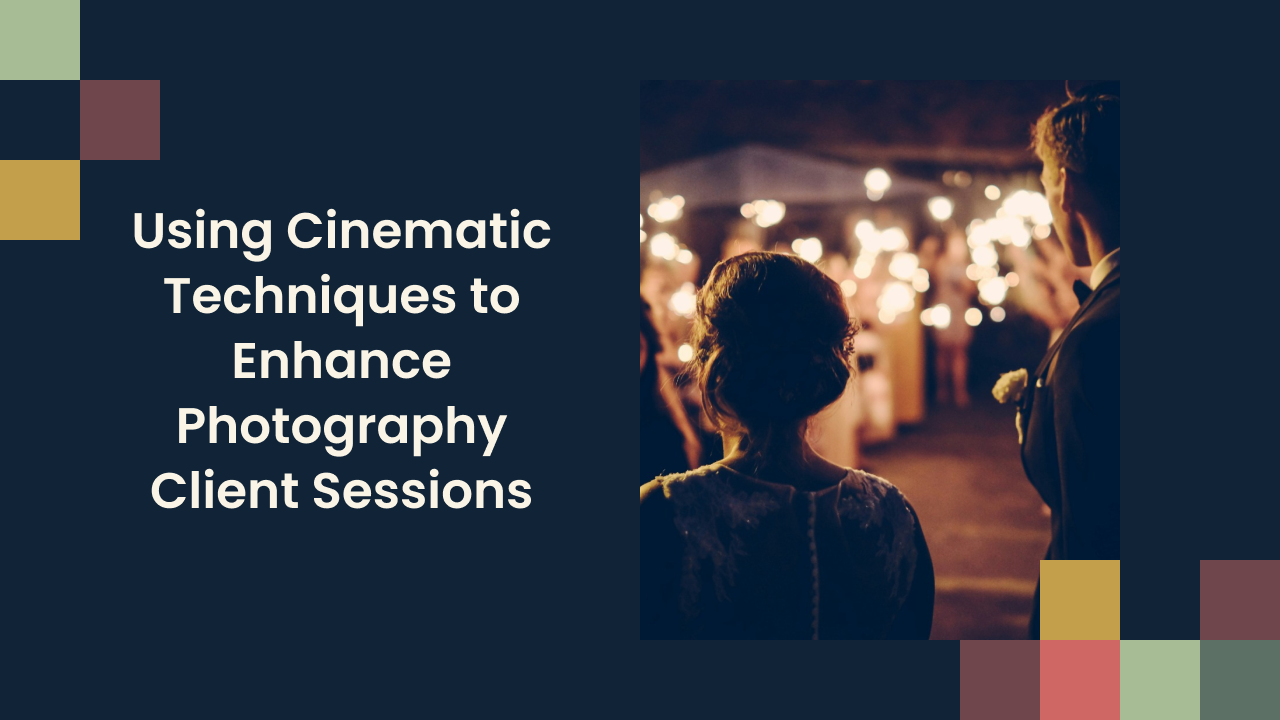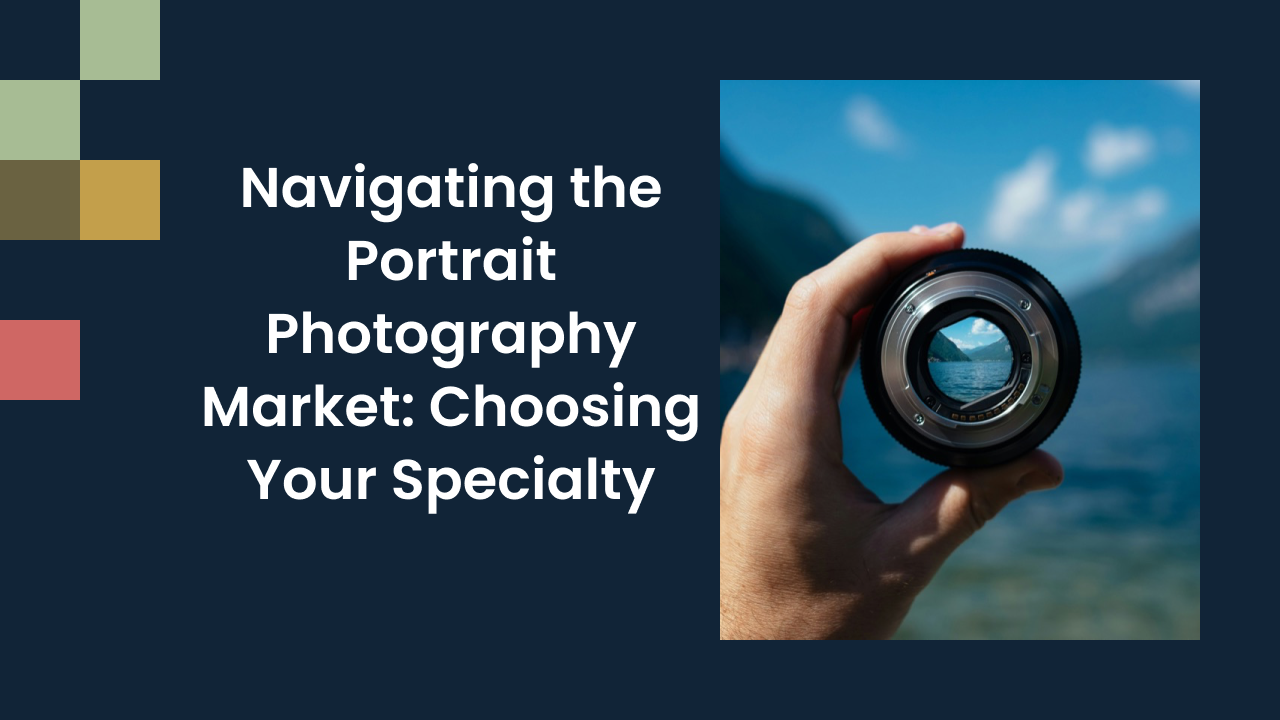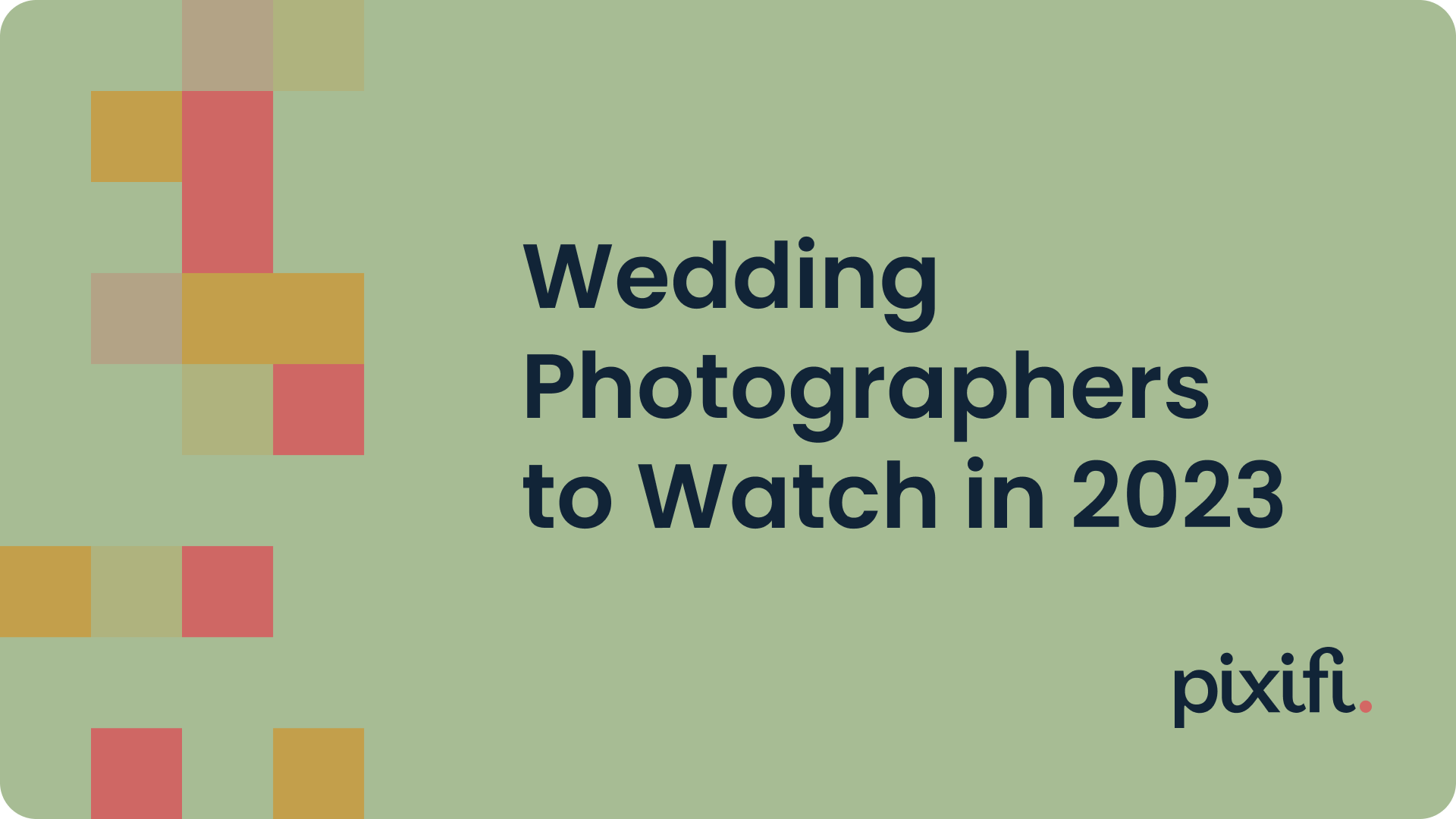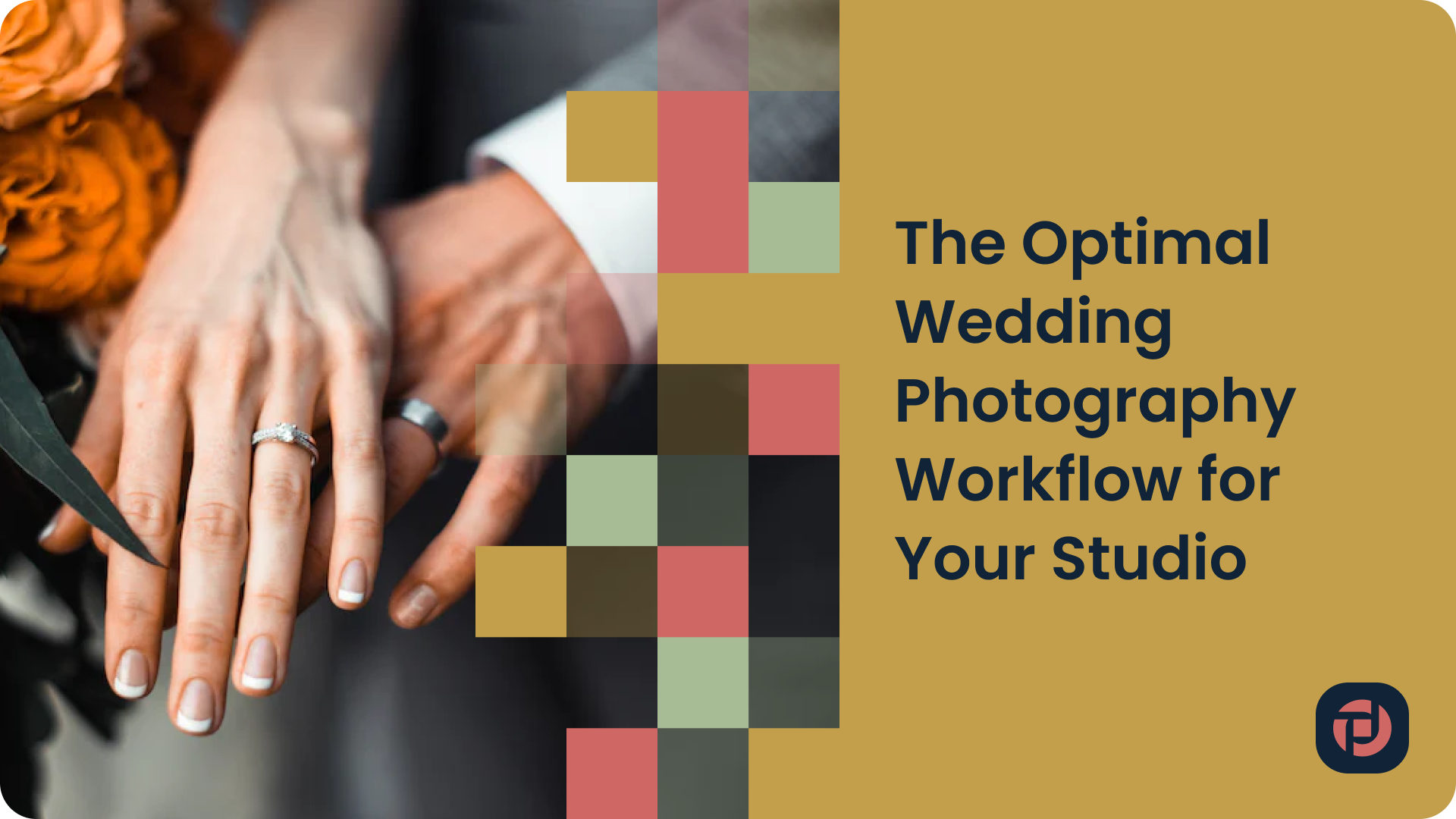Using Cinematic Techniques to Enhance Photography Client Sessions
Finding ways to stand out and provide a unique experience for clients is essential. One such way to elevate your photography and create unforgettable client sessions is by incorporating cinematic techniques. By drawing inspiration from the world of cinema, photographers can enhance storytelling, create mood and atmosphere, and differentiate their style. In this article, we will explore the various aspects of using cinematic techniques in photography and how they can elevate your client sessions.
Understanding Cinematic Techniques
Before delving into the practical application of cinematic techniques in photography, it's important to first understand the artistry behind them. Cinema has long been revered for its ability to captivate audiences through captivating storytelling and powerful visuals. By studying and embracing these techniques, photographers can add depth and meaning to their images.
The Art of Storytelling in Cinema
At the heart of every successful cinematic masterpiece lies a compelling story. By incorporating storytelling techniques into your photography, you can create a narrative that resonates with your clients. Whether it's a wedding, family portrait, or editorial shoot, think about the emotions you want to evoke and weave a story through your images.
Imagine capturing a wedding day through the lens of a cinematographer. You have the opportunity to tell the story of two individuals coming together, their love and commitment shining through each frame. From the nervous anticipation of the bride getting ready, to the joyous celebration of the ceremony, and the heartfelt moments shared between family and friends, your photographs can transport viewers into the very essence of the day.
The Role of Lighting in Creating Mood
Lighting plays a crucial role in both cinema and photography. The way light falls on a subject can dramatically alter the mood and atmosphere of an image. By understanding the different lighting techniques used in cinema, such as high key or low key lighting, photographers can create visually striking and emotionally impactful photographs.
Consider the power of lighting to evoke emotions in a cinematic scene. A dimly lit room can create a sense of mystery and intrigue, while soft, diffused light can convey a feeling of warmth and intimacy. In photography, you have the ability to manipulate light to enhance the mood you want to convey. Whether it's using natural light to create a soft, romantic ambiance or experimenting with dramatic shadows to add depth and tension, the possibilities are endless.
The Impact of Composition and Framing
In cinema, every frame is carefully composed to convey meaning and focus the viewer's attention. The same principles can be applied to photography. Consider the rule of thirds, leading lines, and framing techniques to create visually pleasing and dynamic compositions that draw the viewer into the image.
Imagine capturing a breathtaking landscape through the lens of a cinematographer. By utilizing the rule of thirds, you can position the horizon line in a way that creates balance and harmony. Leading lines can guide the viewer's gaze towards a focal point, whether it's a majestic mountain peak or a winding river. And by framing the scene with elements such as trees or archways, you can add depth and dimension to your photograph, inviting the viewer to explore the frame.
By understanding and incorporating cinematic techniques into your photography, you can elevate your images from mere snapshots to powerful visual stories. So next time you pick up your camera, think like a cinematographer and let the art of cinema guide your creative vision.
Translating Cinematic Techniques into Photography
Now that we have explored the fundamental aspects of cinematic techniques, let's discover how to apply them to photography and enhance client sessions.
When delving into the world of photography, it's essential to understand that it's not just about capturing a moment but about telling a compelling story through visuals. By incorporating cinematic techniques into your photography, you can elevate your images to new heights and create a lasting impact on your audience.
Utilizing Cinematic Storytelling in Photoshoots
Incorporate elements of storytelling into your photoshoots by guiding your clients through a narrative. Encourage them to interact with each other and their surroundings to capture authentic moments that tell a story. Whether it's a romantic stroll through a park or a playful family picnic, let the story unfold naturally and capture the magic of the moment.
By infusing cinematic storytelling into your photography sessions, you can transport viewers into a different world and evoke powerful emotions through your images. Think of each photo as a frame from a movie, with its own plot, characters, and emotions waiting to be discovered.
Manipulating Light for Dramatic Effect in Photography
Experiment with different lighting setups and techniques to create dramatic effects in your photographs. Use techniques like chiaroscuro to create striking contrasts between light and shadow, or add an element of mystery by playing with silhouettes. Don't be afraid to step outside your comfort zone and push the boundaries of traditional lighting techniques.
Light is a photographer's best friend and a powerful tool for setting the mood in your images. By mastering the art of manipulating light, you can add depth, drama, and intrigue to your photographs, transforming them from ordinary snapshots into captivating works of art.
Applying Cinematic Composition and Framing in Photos
Compose your photographs with intention and purpose, just as a filmmaker constructs every shot. Use leading lines to guide the viewer's gaze, frame your subject within interesting elements, and experiment with different angles to create unique perspectives. Remember, the composition should serve the story and evoke the intended emotions.
Composition is the backbone of a visually compelling photograph. By paying attention to the principles of cinematic composition, such as the rule of thirds, symmetry, and balance, you can create images that not only please the eye but also resonate with the viewer on a deeper level. Every frame is an opportunity to craft a visual masterpiece that tells a story without words.
The Benefits of Cinematic Techniques in Photography
Now that you have a grasp of how cinematic techniques can be applied to photography, let's explore the benefits they offer to enhance client sessions.
When delving into the realm of cinematic techniques in photography, one cannot overlook the impact they have on storytelling within each frame. The use of lighting, angles, and composition can transform a simple photograph into a visual narrative that evokes emotions and sparks imagination. Clients not only receive images but also a curated experience that transports them to a different world, creating a lasting memory that goes beyond a mere picture.
Enhancing Client Experience with Cinematic Approach
By incorporating cinematic techniques into your photography, you can elevate the overall experience for your clients. The storytelling, mood, and composition will not only make their session memorable but also create a sense of immersion and connection to their photographs.
Moreover, the cinematic approach in photography opens up a realm of possibilities for creativity and innovation. Experimenting with techniques such as depth of field, color grading, and visual effects can add a layer of sophistication to your work, leaving clients in awe of the artistry and attention to detail present in each image. This attention to detail not only enhances the final product but also showcases your dedication to providing a top-tier experience for every client.
Differentiating Your Photography Style
In a saturated photography market, standing out becomes increasingly important. Utilizing cinematic techniques allows you to differentiate yourself from competitors and develop a unique style that clients will be drawn to. Your clients will appreciate and value the distinctive look and feel of your images.
Increasing Client Engagement and Satisfaction
Cinematic techniques have the power to captivate and engage viewers in a profound way. When your clients see their photographs and feel transported into a cinematic world, their satisfaction and connection to your work will undoubtedly increase. Happy clients are more likely to become repeat customers and refer you to their friends and family.
Practical Tips for Implementing Cinematic Techniques
Now that you understand the benefits and techniques of incorporating cinematic elements into your photography, let's explore some practical tips for implementing them effectively.
Preparing for a Cinematic Photoshoot
Before your shoot, it's crucial to plan and prepare. Scout locations that align with your desired narrative and mood. Consider the time of day for optimal lighting conditions. Create a shot list to ensure you capture all the essential moments. By taking the time to prepare, you can make the most of your cinematic photoshoots.
Directing Clients Like Actors
During your session, guide and direct your clients as if they were actors in a film. Provide them with prompts and suggestions to evoke the desired emotions and actions. This will help create natural and authentic moments that tell a story. Remember to communicate clearly and make your clients feel comfortable and confident in front of the camera.
Post-Processing for a Cinematic Look
Once you have captured your cinematic photographs, the post-processing stage is where you can fully bring the cinematic aesthetic to life. Experiment with color grading to enhance the mood and atmosphere of your images. Use software tools to add subtle film-like grain or vignettes, giving your images that authentic cinematic feel.
In conclusion, incorporating cinematic techniques into your photography can elevate the client session experience, differentiate your style, and increase client engagement and satisfaction. By understanding the fundamentals of cinematic storytelling, lighting, and composition, and applying them to your photography, you can create visually compelling images that tell a story and leave a lasting impression. So embrace the world of cinema and let it inspire your creative journey as a photographer.
Looking for an easier way to manage and grow your studio? Experience a platform built by a photographer, for photographers. Try it free for 2 weeks.











